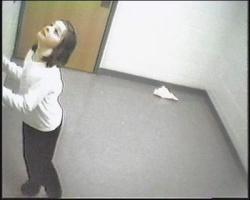While the meting out of corporal punishment as a means of disciplining school-age children long has been called into question, the use and benefit of time-out rooms now is being held in scrutiny by educators, parents and other child advocates. (Story continues below.)
Discussion Starters
1.) What is your opinion? Are time-out rooms an effective or counterproductive form of discipline?
2.) Some childcare providers recommend one minute in time-out for every year of age of the child being disciplined. Do you agree or disagree?
3.) According to Scripture, humans are designed with the need of fellowship, and the only place isolation is required is in the Book of Leviticus in regard to dealing with leprosy. From your own study of the Bible, how do you see God correcting, or “rehabilitating,” misbehaving individuals?
When an 8-year-old autistic girl was sent to her school’s time-out room for failure to complete a reading assignment, she was held there for three hours and and not allowed to use the restroom. Time-out rules required her to sit on the floor, legs crossed; not moving, grimacing or uttering a sound for at least five minutes, lest the clock be restarted.
Due to her autism, she was unable to meet those requirements and wet herself before being released. When her parents learned she’d been restrained, they withdrew her from the school and filed suit.
Educators admit time-out rooms increasingly are being used with students who display behavioral problems, but they aren’t always an effective means of behavior modification. In the case of autistic children, who typically don’t like social settings, such isolation is seen as a reward. Furthermore, isolating an autistic child can be counterproductive because segregation emphasizes they’re different.
Some say using these “isolation booths” is a form of abuse, especially considering some are unsafe. Some time-out rooms double as a janitor’s closet with disinfectant and no ventilation, where children sometimes have been held for more than an hour.
Experts admit time-out rooms can be used effectively, but seldom are. The key is to use them as a place for a child to calm down and reflect on his or her behavior, then coached to develop social skills.




